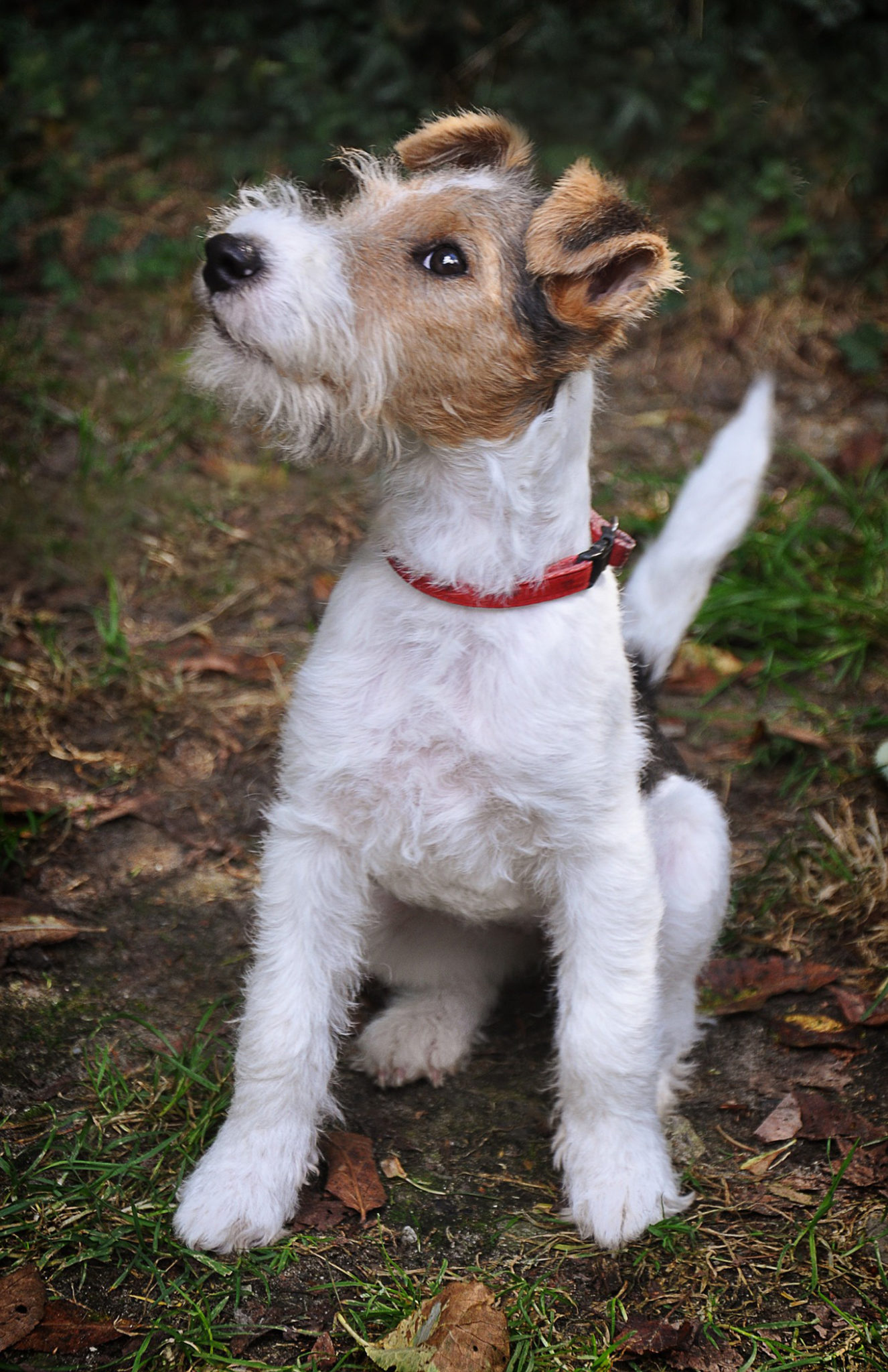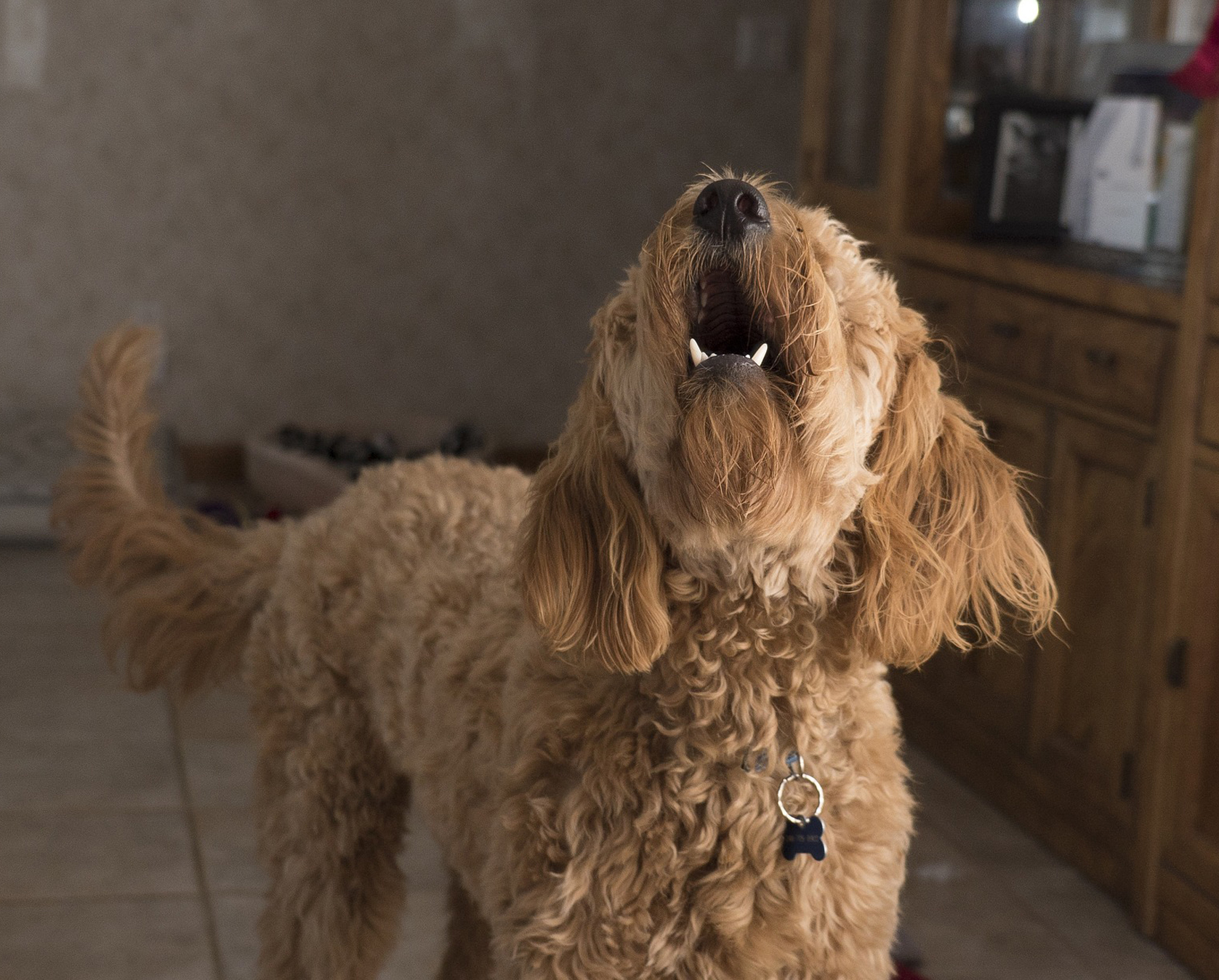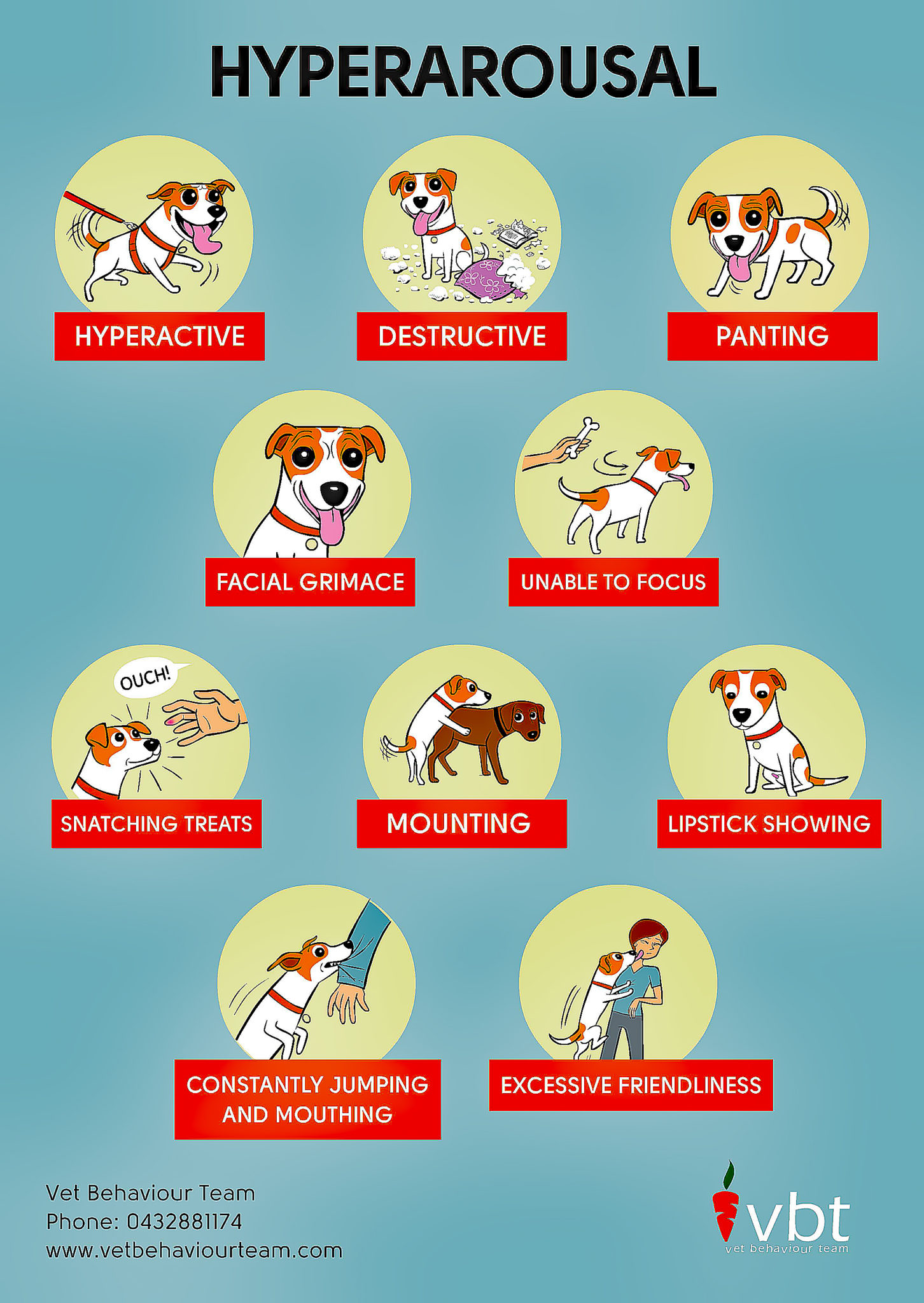You Have a Dog with Big Feelings? It Could Be Hyperarousal – and You Can Calm Him Down
It could be hyperarousal – and you can calm him down.

Alexandria, VA – Do you or someone you know have a dog with big feelings? What is a dog with big feelings? Well, there are the obvious ones, the barkers, the lungers, the jumpers. Some may spin or snarl, or bare teeth. Then there are the not-so-obvious ones. They freeze, get low, shut down, or cower. But they are dogs with big feelings, too. Sometimes, it stems from fear or anxiety. It can often be related to the dog’s inability to calm or relax. It’s commonly called a lack of self-control or impulse. These dogs may be enthusiastic but frequently go over the top with excitement, especially outside or when people enter the home.
Dogs can be pretty exuberant animals. They can be optimistic and love all people and dogs, but their greetings can quickly turn to jumping, nipping, and mouthing. Conversely, they can be pessimistic, on high alert, worried, frightened, or concerned about the world around them, particularly in new environments and unfamiliar or novel situations, triggers that can lead to lunging, barking, and the like.
Regardless of where your dog is on this emotional spectrum, over-arousal is the underlying cause at both ends. Although you might not think that the withdrawn, worried, or anxious dog is also over-aroused, emotionally, they are, but express their arousal differently.
Arousal refers to how a dog responds to events and surroundings, such as people, other dogs, or squirrels, or activities initiated by you, like a car ride or teaching a challenging new skill. When exposed to exciting or stressful stimuli, the brain floods with excitatory chemicals, including adrenaline and cortisol, which impact consciousness, attention, and information processing. So, although arousal can be the response to both good and bad stimuli or triggers, how well a dog can lower their arousal to a calmer state and process information better can vary. When they cannot calm down, it leads to a state of “hyperarousal.”
Sometimes a client will tell me that their dog is “hyper” all the time, which usually means the dog is in a hyper-aroused state. When stressful or excitable events cause a dog’s cortisol levels to rise, it can take 36-72 hours for cortisol levels to return to normal. And, if the dog has multiple stressful events over hours or days, also known as “trigger stacking,” it could take even longer to recover.

Dogs living in a constant state of high arousal are more likely to display problem behaviors. They are generally past the point of calm thinking. Positive reinforcement methods and techniques, desensitization and counter-conditioning to make new and positive associations with things that before caused fear, reactivity, or anxiety, and reinforcing calm behaviors will work to change not only the dog’s behaviors but, most important, the dog’s emotional state.
So, if someone tells you that your dog is being stubborn, trying to dominate you, you have to show them who’s boss, run the other way as fast as you can. Consider instead that he’s in a highly aroused state, unable to think straight, and therefore unable to process your requests or adapt to environmental changes.
What can you do if you have a dog that exhibits high arousal, over-the-top behaviors, is fearful, anxious, or reactive to people, dogs, new environments, novel objects, or squirrels? First, start capturing and rewarding any calm moments in your dog, even for a second. Work up to two, then three seconds, and keep building. Dogs do not generally come with a default calm state. But we can teach them that calm gets reinforced. Here are a few tips to get started to encourage your dog to relax and settle:
- Teach the “Off-Switch” – Play a round of tug or fetch with your dog to get their arousal up. Then, hold the tug or ball above your head and wait for a moment of stillness, then restart the game. Work toward increasing stillness and reward.
- Teach a reliable “Wait” cue. Ask them to wait while fixing their food, putting the bowl down, putting their leash on, going out the door, waiting at the corner, etc. Add in a voluntary check-in with eye contact to increase their focus and attention on you.
- Hand feed some of their meals, one piece at a time, slowly and thoughtfully by playing the Airplane Game. Raise the piece of food or treat in your hand above your head. Slowly bring it down and deliver it to your dog’s mouth. If they try to jump or grab it, simply raise your arm above your head and start again—no need to say anything negative.
- Of course, physical activity and daily walks are essential, but make sure to give your dog time to sniff. Stop the walk sometimes, stand still for a minute or two, and play the “Do Nothing Game,” slowly increasing it to three to five minutes of nothing.
- Passive Calming Activities and Brain Games – Along with sniffing grass, make or buy a snuffle mat, use treat dispensing toys, frozen kongs, hide the treats, and chews such as yaks, uncooked bones, and bully sticks that work your dog’s jaws and satisfy their chewing needs.

These are some games and exercises you can start immediately to help your dog learn how to chill.
Sandy Modell, CPDT-KA, is the Founder, Owner, and Head of Training of Wholistic Hound Academy, Alexandria’s award-winning, premier canine training and learning center — offering classes and private lessons in puppy training, adolescent and adult foundation and life skills, behavior modification, agility, dog sports, and fitness, kids and dogs, pre-pet planning and selection. Classes, including our Dogs With Big Feelings class, are starting soon! Visit www.wholistichound.com to enroll in our programs, and like us on Facebook.com/wholistichound and follow us on Instagram at Instagram.com/wholistichound.
ICYMI: Adopt Fritter: Loves the Outdoors and Would Be a Wonderful Family Dog





… [Trackback]
[…] Read More here on that Topic: thezebra.org/2023/08/07/you-have-a-dog-with-big-feelings-it-could-be-hyperarousal-and-you-can-calm-him-down/ […]
… [Trackback]
[…] Read More to that Topic: thezebra.org/2023/08/07/you-have-a-dog-with-big-feelings-it-could-be-hyperarousal-and-you-can-calm-him-down/ […]
… [Trackback]
[…] Information to that Topic: thezebra.org/2023/08/07/you-have-a-dog-with-big-feelings-it-could-be-hyperarousal-and-you-can-calm-him-down/ […]
… [Trackback]
[…] Here you will find 15317 additional Info on that Topic: thezebra.org/2023/08/07/you-have-a-dog-with-big-feelings-it-could-be-hyperarousal-and-you-can-calm-him-down/ […]
… [Trackback]
[…] Read More on that Topic: thezebra.org/2023/08/07/you-have-a-dog-with-big-feelings-it-could-be-hyperarousal-and-you-can-calm-him-down/ […]
… [Trackback]
[…] Find More Information here on that Topic: thezebra.org/2023/08/07/you-have-a-dog-with-big-feelings-it-could-be-hyperarousal-and-you-can-calm-him-down/ […]
… [Trackback]
[…] Here you will find 61271 additional Information on that Topic: thezebra.org/2023/08/07/you-have-a-dog-with-big-feelings-it-could-be-hyperarousal-and-you-can-calm-him-down/ […]
… [Trackback]
[…] There you can find 76922 more Information on that Topic: thezebra.org/2023/08/07/you-have-a-dog-with-big-feelings-it-could-be-hyperarousal-and-you-can-calm-him-down/ […]
… [Trackback]
[…] Read More on to that Topic: thezebra.org/2023/08/07/you-have-a-dog-with-big-feelings-it-could-be-hyperarousal-and-you-can-calm-him-down/ […]